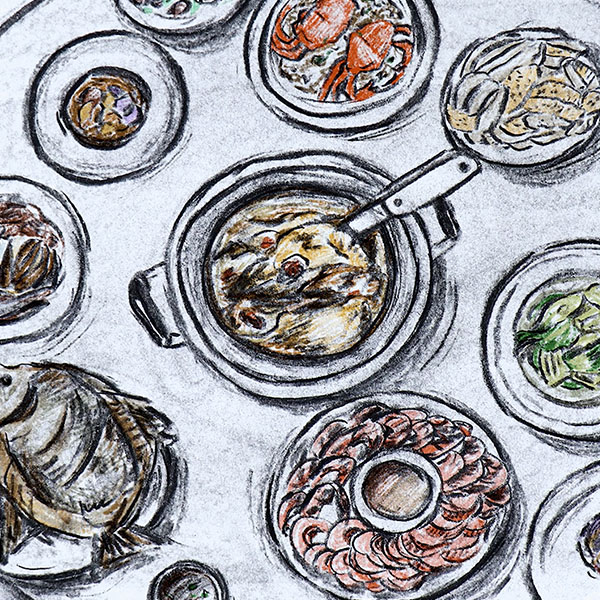Alice Chen is a Taiwanese multimedia visual communicator specialising in audio-visual work, illustration, and photography. She employs a range of mediums to explore abstraction with the mundane, playfulness against attempts to evoke emotions. Her work is driven by the diversity of humanity, social interactions, and experiences, exhibited clearly in her work Have You Eaten?
Have you Eaten is a film inspired by the personal experience of being in a long-distance familial relationship, exploring the possibilities of bridging geographical, cultural, generational, and emotional distances together. By recreating a meal with her family through charcoal animation, objective and subjective perspectives of communication were depicted through visual and sound design.
Alice is interested in creating a bittersweet narrative that portrays her experience, blending reality, memories, constructed spaces, and subjective observations through 2D means. Conceptually, she is inspired by the sociocultural meaning of mealtimes as observations about how people connecting through food can inform intimate communication in distance.
The concept of technology also comes into play, where the process of image transmission is explored and expressed through the animation, representing an additional layer to the various distances between her and her family.
Materially, she is inspired by William Kentridge’s process of addition and erasure with charcoal, as its materiality and process can represent the permanence and temporality with long-distance familial relationships, where moments of togetherness can easily be ended with calls, yet memories of being together are imprinted almost permanently.
In addition to the visual aspect of the piece, the sound design also represents an important part of bridging distances with the combination of family conversations, past videos, and foley recordings done in the studio. With sound design, objects can be felt, and memories can be heard. Thus, it is only with sound and visuals can this piece become an emotional and heartfelt representation of Alice’s familial relationship.


